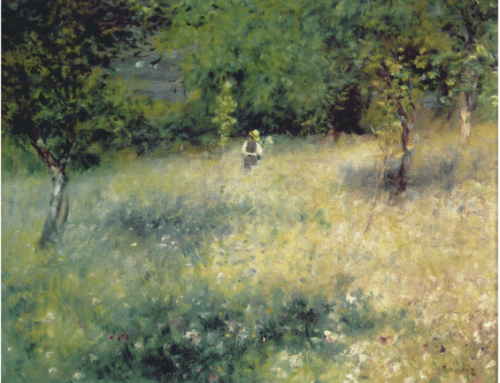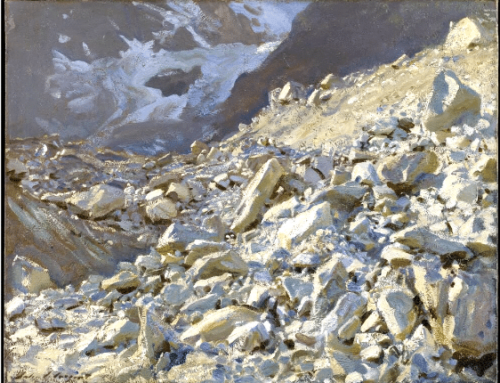The marketing wisdom these days is that everything’s got a story, from artisanal peanut butter to handcrafted organic beds. People love stories because that’s what humans do.
We are all ABOUT stories; stories provide context and meaning for, well, everything. So, surprise: The audience for your artwork craves them too. If you can at least hint at why your art is worth looking at, it’ll be all the better for everyone concerned (potential galleries, shows, buyers, and collectors). To do that it can help to have a “story,” some kind of loose narrative context for your work that implicitly answers the question of why anyone should care.
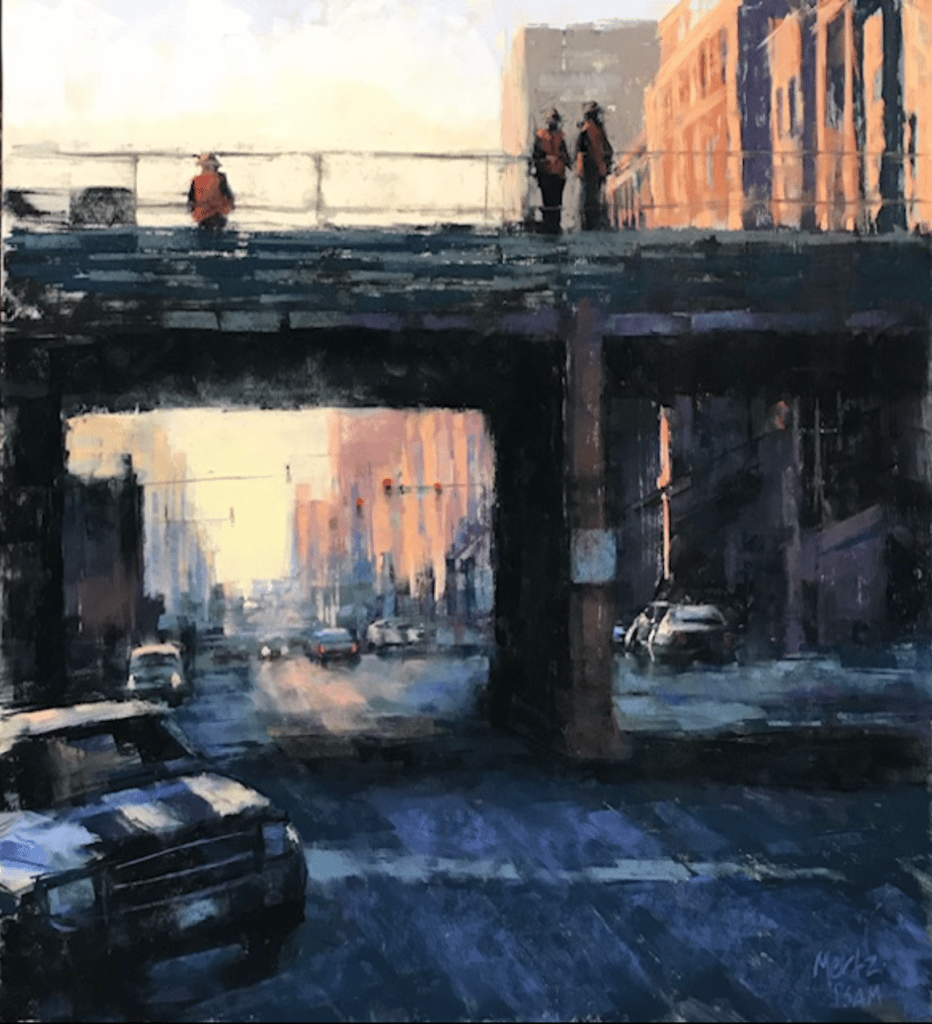
Nancie King Mertz, West Loop Light, 20″ x 18″ pastel
If you’re thinking you shouldn’t have to explain your work to anybody, you’re right. And that’s not what we’re talking about here. The “story” does not “explain” your work. Rather, it gives the folks you most want to reach a sense of how much thought and feeling you put into your art.
Or maybe you’re thinking you’re not ready for this – like, how are you supposed to explain what you do when you don’t even really know what you’re doing? Again, this has nothing to do with “explaining” your work. It is entirely about sharing your true and honest passion for experience, for life, and for art, your own and others.
A great way to discover your passion is to start a series of paintings unified by a single theme. Take the work of Nancie King Mertz, whose pastels illustrate this article. These paintings are part of a series of urban pastels in which Mertz “tells” about the life of the city of Chicago and what it’s like to walk its streets, through the feeling she gets into the work.
In Majesty on Michigan (below) she hasn’t simply found some interesting angles within the Chicago city architecture. She gives us a church, a modest cathedral it looks like, nestled, on one side, next to a townhouse and on the other, next to a high-rise building commercial building. There’s a story here – one of time, priorities, the growth of cities and towns and the flow of human civilization, all in a simple glance at a sunlit city street.
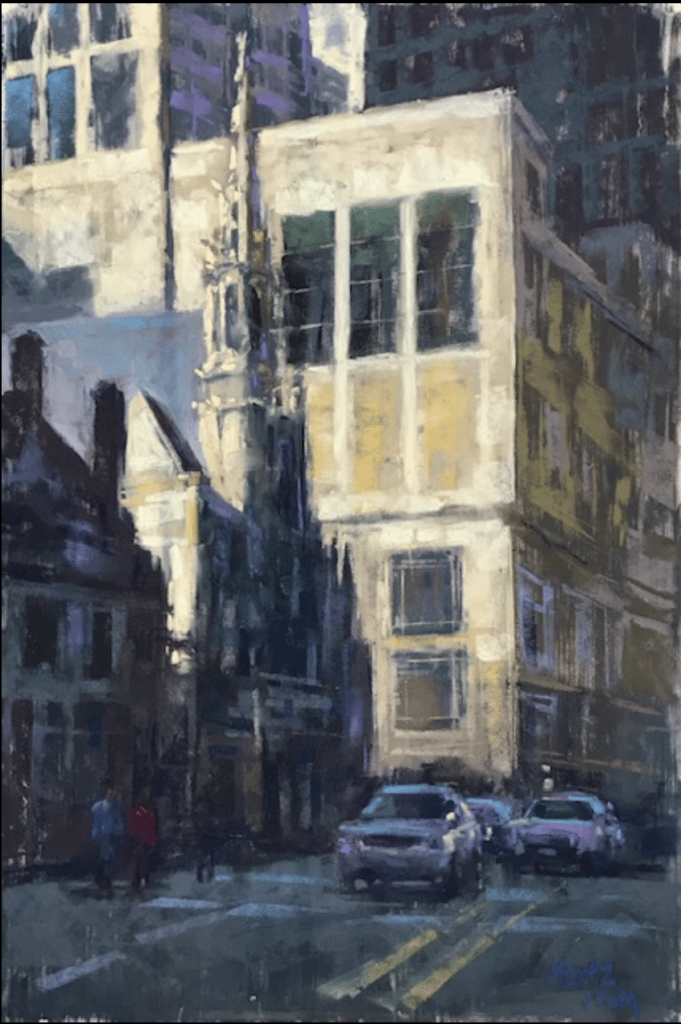
Nancie King Mertz, Majesty on Michigan, 18″ x 12,” pastel
Reading into it? I don’t think so, really. I don’t think it matters if not even the artist thinks consciously or can talk about things like this. It’s all under the surface, unspoken, embedded in the non-random choice Mertz made to paint this subject, this line of buildings and not another. This painting, as do all of the others in this series to some extent, “tells the story” of the city and what it’s like to live there.
You don’t have to have it all figured out – but the more you consider how your work fits in to this bigger, endlessly puzzling story we’re living called Humanity, the better and more confident you’ll feel about it, and the more you’ll want to keep showing – and making – your best.
Simplifying Details Unleashes the Story
Watercolorist Keiko Tanabi advises would-be “story tellers” in paint to let go of agonizing over every brushstroke and develop faster ways to incorporate details by artfully simplifying things like facial expressions, hands, objects, flowers, grasses, and trees.
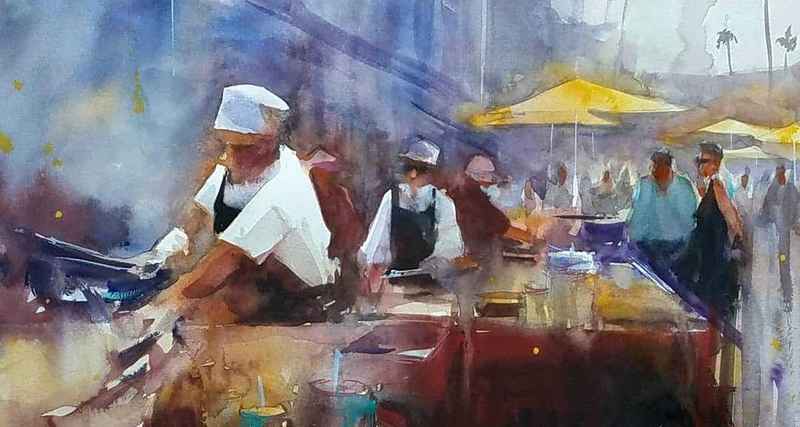
Keiko Tanabe, oil
It’s the devil in the details, she suggests, that distract painters from the feeling and the implied narrative – the very things that made them want to paint something in the first place. She has a video, Storytelling with Watercolor, that details her process.
In the paint,
Chris



